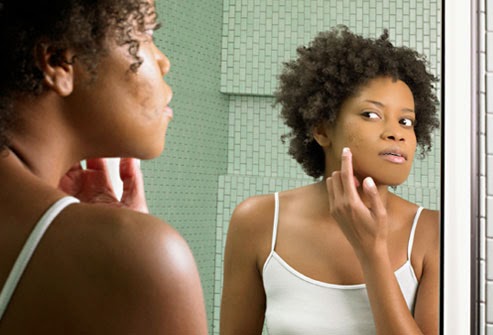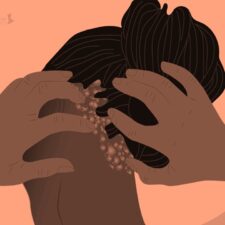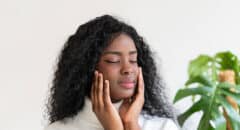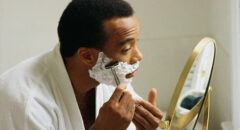Surprising causes of adult acne and some great solutions dermatologists highly recommend to control it.
Although it’s commonly thought of as a problem of adolescence adult acne occurs after age 25. It is quite common to see acne persist well into the 40s and sometimes beyond.
Although it does have many similarities to adolescent acne, there are a few unique qualities of adult acne.
What Causes Adult Acne?
For the most part, the same factors that cause acne in adolescents are at play in adult acne. The four most common factors are:
excess oil production pores becoming clogged by “sticky” skin cells, bacteria, and inflammation.
hormones, stress, and the menstrual cycle in women, all of which can influence oil production
hair products, skincare products, and makeup, which can clog pores
diet, which can influence inflammation throughout the body
Sudden adult acne breakouts
Hormonal changes, or hormonal imbalance, and an unhealthy diet including lots of deep-fried food or junk and snack foods, release of cortisol hormones because of excessive stress, excessive production of sebum are often at the root of sudden outbreaks. Changes in hormones, including those brought on by pregnancy and menstruation, can also trigger excess oil. Women who smoke seem to be more acne-prone.
Acne also tends to run in families, so if a parent had adult acne, you're at higher risk. Some birth control pills can also make acne worse. Some medications including lithium, antiseizure drugs, and corticosteroids, can also cause acne. Although your dermatologist can help you figure out why your acne is happening, in some cases, it may be related to another condition.
Many skin disorders, including acne, can be a window into a systemic condition. For example, hair loss, excess hair growth, irregular menstrual cycles, or rapid weight gain or loss in addition to acne, or rapid onset of acne with no prior history of acne, can all be red flags of an underlying disease, such as polycystic ovarian syndrome, or other endocrine disorders. Tell your doctor if you are experiencing additional symptoms; he or she may recommend further evaluation.
How to Banish Those Acne Breakouts
Wash your face twice a day, especially after sweating. Use a mild cleanser and warm water -- not hot water. Do not scrub your skin as that can worsen acne.
Use your fingertips (not a washcloth or sponge) to wash your face with a non-abrasive cleanser.
Avoid touching your face. Touching your face can increase oiliness, irritate your skin, and encourage the growth of bacteria. Keep oily hair off of your skin. Oily hair care products can get on your face and clog pores. Look for oil-free hair products.
Anything you put on your face has the potential to clog pores. Look for oil-free makeup, sunscreens, and other skin products. Non-comedogenic and non-acnegenic products are better for acne-prone skin. Try using powder cosmetics instead of cream foundations. Some dermatologists recommend oil-free liquid silicone matte foundations such as those containing dimethicone or Cyclomethicone.
Deep-cyst acne can be painful and frustrating to treat. Follicles are clogged deeply beneath the skin's surface. Your doctor may choose to treat this severe form of acne with antibiotic pills for a short time. Injectable corticosteroids may calm the inflammation. Topical creams with retinoids may also help. Never pick, poke, or pop lesions. That can worsen acne and cause scars.
On its own, most acne does seem to go away with age. According to one study, acne becomes less common after age 44. For some women acne ends with menopause. Until then, fortunately, there are treatments for adult acne. Most people find a combination of products work best. Treatment takes time -- usually 4 to 12 weeks -- and you need to continue it for it to work.
Medicated creams with benzoyl peroxide, salicylic acid, or alpha-hydroxy acid are generally the first treatments to try. You can get them over the counter or by prescription. Retinoids -- vitamin A-based creams -- also work to unclog hair follicles. Your doctor can prescribe stronger creams, or other medications that help, such as antibiotics, oral retinoids, androgen blockers, and low-dose birth control pills.
High-tech solutions Available
Light therapy, or PDT, uses lasers to treat acne. Vacuum therapy also works with lights. Both of these options, however, can be quite expensive.
Newest Breakthrough Acne Solution Available
The best news of all is that in August of 2020, the FDA approved the first new acne treatment in 40 years! Most current treatments for acne are with a type of drug called retinoids and antibiotics. Winlevi is a first-in-class topical androgen receptor inhibitor that tackles the androgen hormone component in both males and females. Winlevi offers a non-antibiotic approach to people with acne by targeting the androgen receptors directly in the skin. It’s a whole new class of topical medication in dermatology and an exciting breakthrough in acne treatment. The Winlevi medication is said to be a true a “game-changer for acne patients. Dermatologists are calling it the ‘holy grail’ of acne treatment for both males and females. It became available in the United States in early 2021.









